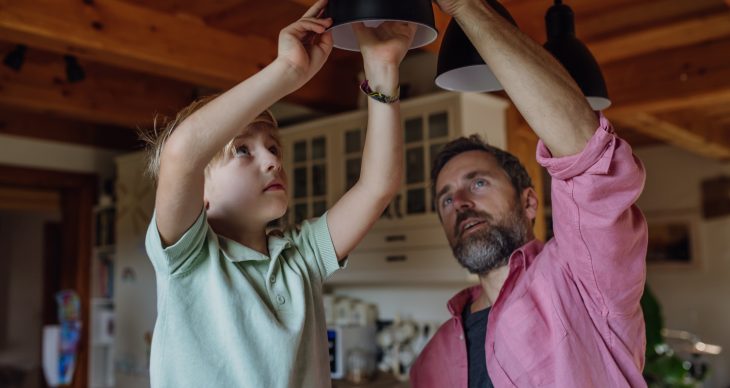The Weatherization Assistance Program (WAP) significantly benefits low-income households by improving energy efficiency and lowering energy bills. These upgrades can make homes more comfortable and create long-term savings by reducing energy consumption.
Let’s explore how WAP can benefit families and directly impact their energy costs.
One of the main benefits of weatherization is the immediate reduction in energy bills. WAP provides upgrades targeting areas where energy is lost, such as drafts, outdated appliances, and poor insulation.
By sealing air leaks, adding insulation, and upgrading systems, homes use less energy to heat and cool. Key energy-saving improvements may include:
- Insulating walls, attics, and floors: Proper insulation helps to maintain a consistent indoor temperature, reducing the need for heating and cooling.
- Sealing air leaks: Weather stripping and caulking windows and doors help to prevent drafts and keep warm or cool air inside.
- Upgrading heating and cooling systems: WAP may replace old, inefficient furnaces or air conditioners with newer, energy-efficient models.
- Replacing windows and doors: In some cases, WAP will upgrade windows and doors to energy-efficient models that better retain heat and reduce energy loss.
- Installing energy-efficient lighting and appliances: Replacing old light bulbs with LEDs or upgrading to energy-efficient refrigerators and other appliances can significantly reduce energy use.
- Install programmable thermostats: These thermostats better regulate temperature and save energy by allowing you to set heating and cooling schedules that align with your lifestyle, helping to avoid unnecessary energy use.
- Insulate water heating pipes: Insulating water heating pipes reduces heat loss and improves water heating efficiency. This ensures that hot water stays hot for longer, reducing the energy your water heater needs to function.
- Repair minor roof or wall damage: Fixing these small issues can prevent air leaks and moisture buildup, contributing to overall energy efficiency.
Weatherization also enhances comfort by addressing drafts, poor insulation, and outdated systems, making maintaining a stable indoor temperature easier. This is especially beneficial for vulnerable populations, like the elderly or families with young children.
Additionally, weatherization can:
- Improve indoor air quality by reducing dust and allergens.
- Lower the risk of carbon monoxide leaks by replacing old heating systems.
Many WAP improvements, like insulation and air sealing, provide ongoing savings for years. Energy-efficient systems installed through the program can last for decades, offering continued financial relief.
Weatherization also reduces energy consumption, helping lower greenhouse gas emissions and contributing to environmental sustainability.
Looking for more ways to save energy and lower your bills? Check out the next slide for tips on reducing energy usage in your home.



